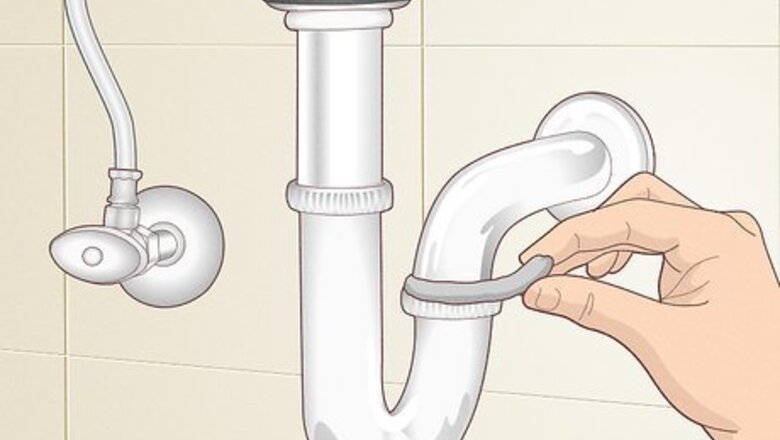
views
Patching Leaks Temporarily
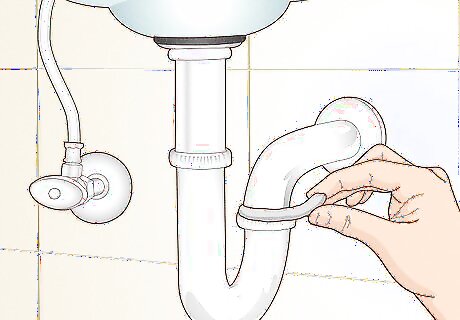
Apply a 2-part epoxy putty for the most durable temporary fix. A 2-part epoxy putty is made up of a base and a hardener that solidify around your pipe when they’re mixed together. Just knead both putties in your hand until they’re thoroughly combined. Then, press the putty onto the section of pipe that’s leaking so it’s about ⁄2 inch (1.3 cm) thick. Leave the putty to cure for the amount of time listed on the packaging before running water through your drain again. You can buy 2-part epoxy putty from your local hardware store. You can use it on any type of pipe. Even if the putty stops your leak, look for a more permanent solution to the leak as soon as you can.
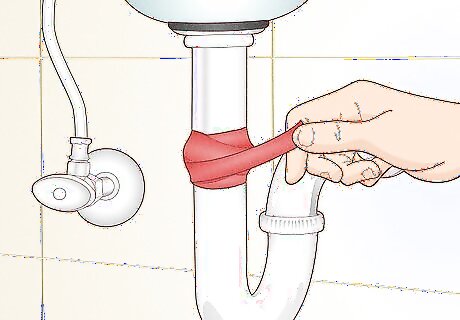
Wrap self-securing silicone tape around the pipe if there’s only a minor leak. Silicone tape works best around the joints in your drain pipe since it’s meant for low-flow leaks. Pull the tape tight and wrap it around the pipe, overlapping half of the piece underneath it with each rotation. Keep wrapping your tape past the edges of the leak so it forms a tight seal. Silicone tape won’t stick directly to your pipe, but it will stick to itself, so it’s easy to remove later on. It also works on any type of pipe so it’s pretty versatile.
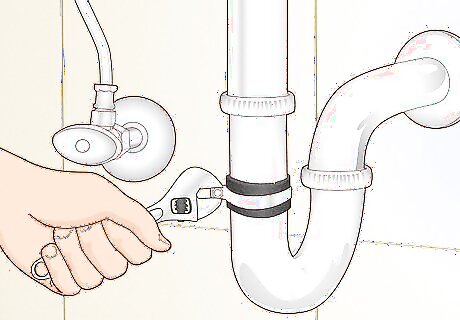
Secure a pipe clamp over a leak if it’s in the middle of a pipe. Clamps have a flat rubber piece called a gasket and a metal fastener that attaches around the pipe. Just be sure to get a clamp that fits the size of your pipe so it has a tight seal. Press the gasket tightly against the section of pipe that’s leaking. Set the clamp on top of the gasket and secure it around the pipe. Then, use a wrench to tighten the clamp completely so water can’t escape. Clamps work for any type of pipe you’re repairing. You cannot use clamps on joints or corners since they won’t sit properly around your pipe.
Fixing Leaky Pipe Connections
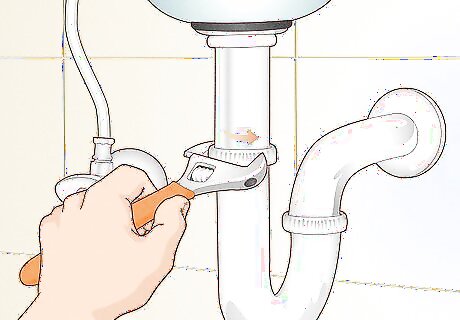
Tighten the slip nuts between pipes if they’re leaking at the joint. A lot of times, you may just have a loose slip nut, which is a round fastener where one pipe meets another. Go underneath your sink and find the first slip nut where the vertical pipe connects to the drain. Turn the slipnut counter-clockwise until it’s hand-tight. Work your way down the rest of the pipe tightening all of the other nuts. Be careful not to overturn the slip nuts since you could easily damage or strip them. Run some water down your drain and check if there are still leaks. If there are, then try tightening the slip nuts by a quarter-turn with a pair of pliers.
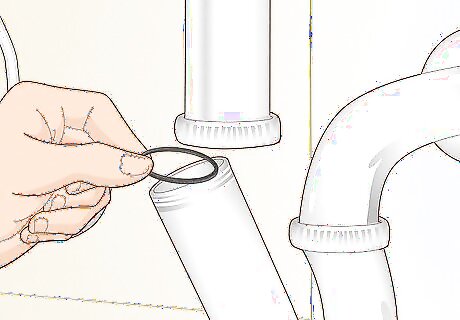
Replace rubber gaskets at pipe connections if they’re old and cracked. The gaskets are the small rubber pieces that fit between metal or PVC pipes and form a water-tight seal. Unscrew the slip nuts along the drain pipe and pull out the rubber gaskets to see if they have cracks or damage. If you notice any damage, replace the gaskets with ones that are the same size. Most gaskets will have a wider end and a narrower end. Push the narrow end of the gasket inside the pipe. If you’re replacing the rubber gaskets on a slip nut, you’ll slide the gasket directly onto the pipe instead. Make sure the narrower end of the gasket points toward the end of the pipe where you’re making the connection. You can buy replacement gaskets in the plumbing section of your local hardware store.
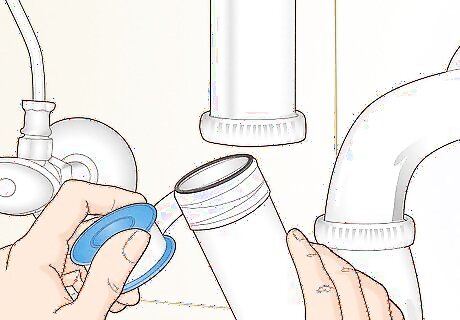
Wrap plumber’s tape around threadings on metal pipes. Plumber’s tape, or Teflon tape, creates a water-tight seal where the pipes screw together. If you have metal drain pipes, unscrew the slip nuts holding them together. Wrap the plumber’s tape clockwise around the threading, overlapping each rotation by half of the tape’s width. Work up to the ends of the threading before cutting the tape and screwing your drain back together. Avoid putting the tape on counter-clockwise since it could bunch up or unravel when you screw the pipe back onto your drain. Do not use plumber’s tape on PVC or plastic pipes since it could cause you to overtighten or damage the pipes.
Replacing the P-Trap
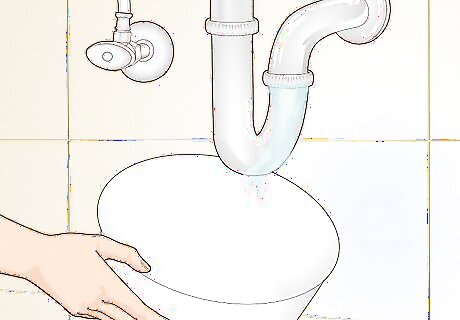
Put a bucket or pan underneath the pipes. Even though there’s no running water in your drain pipe, residual water may get caught in the P-trap, which is the J-shaped piece of pipe underneath your sink. Clear out the space underneath your drain pipes and set a tray or bucket directly under your pipes. Some P-traps have a screw-off valve on the bottom you can use to drain it. Just turn the valve on the P-trap counter-clockwise until water spills out.
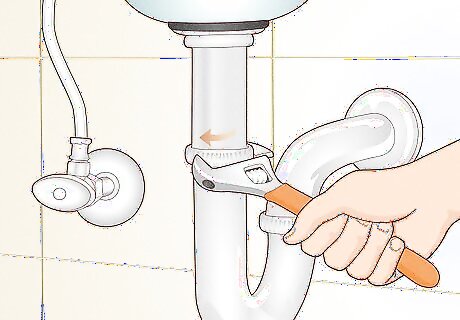
Unscrew the slipnuts starting from the drain to remove the pipe. The slipnuts are the round connectors between 2 pipes. Start with the slip nut where your sink drain connects to the long vertical pipe underneath your sink. Turn the nut clockwise to loosen it completely. Follow the pipe and unscrew any remaining slipnuts until you reach the horizontal pipe coming out from your wall. Each section of pipe should easily detach as soon as you unscrew the slipnuts attached to it. If only the J-shaped section of the P-trap is damaged, then you only need to remove the slipnuts connecting to that portion of pipe. You can leave the other pipes connected to your drain and wall. Make sure no one uses your sink after you detach any drain pipes, or else water will spill onto the floor. If you want to, you can turn off the water supply directly at your sink to make sure no one uses it. Find the supply valve connected to the wall and turn it clockwise to shut it off.
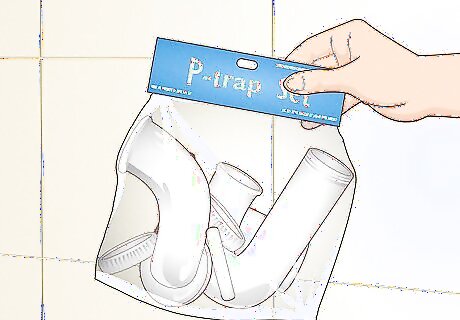
Buy a P-trap that’s the same size as your old one. Bring your P-trap and any other drain pipes you removed with you to the hardware store. Your new P-trap kit will come with the pipes, gaskets, and slipnuts you need to install it. Make sure the new kit you buy has a P-trap and pipes that are exactly the same size as your old ones, or else they won’t properly fit. Many P-trap kits are made from PVC so they’re easy to install and take apart, but you can also buy metal drain kits.
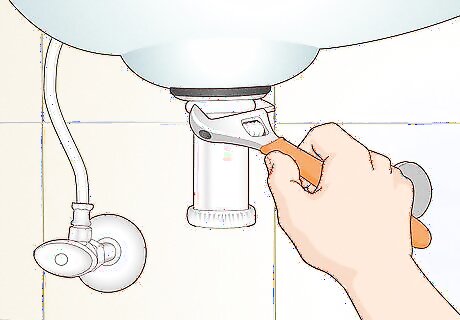
Screw the new vertical pipe onto the bottom of the drain. Use the longest section of pipe to connect to your drain. Hold the top of the pipe against the bottom of your sink’s drain and slide the slip nut onto the drain’s threading. Just turn the slipnut counter-clockwise to tighten it onto your drain. The pipe may come with a flanged washer, which is a round rubber piece that fits inside the end of the pipe. If your P-trap kit has one, place the narrow end of the washer inside the drain pipe.
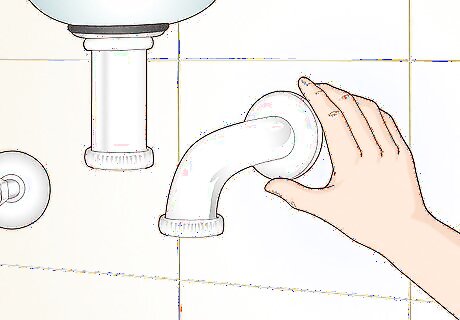
Attach the trap arm and washer to the stub out in your wall. The trap arm is a short piece of pipe that has a right angle, and it extends out from your wall. Push the wider end of a flanged washer onto the straight end of the trap arm. Then, slide the trap arm into the drain pipe sticking out from your wall so it makes a tight seal with the washer. After that, just tighten the slipnut to secure the trap arm in place.
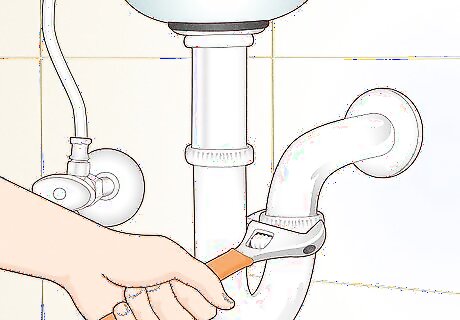
Install the new P-trap on the pipes. Slide the slipnuts and flanged washers onto the trap arm and the vertical drain pipe. Make sure the narrow ends of the washers point toward the open ends of the pipe. Position the P-trap on the ends of the pipes, and screw on the slipnuts until they’re both hand-tight. You do not need to use any sealant or pipe glue on a P-trap since you’ll want to be able to take it apart later on.
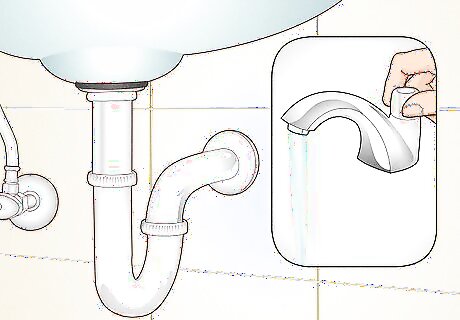
Test the trap for any leaks. Turn on your faucet and let the water run down your sink’s drain. Watch your pipes and the connections to make sure that there isn’t any water dripping out. If there is, then try giving your slipnuts a quarter-turn counter-clockwise with a pair of pliers to tighten them. If you notice your leak comes from where your drain connects to your sink, then you may need to replace the strainer instead.
Replacing the Sink Strainer
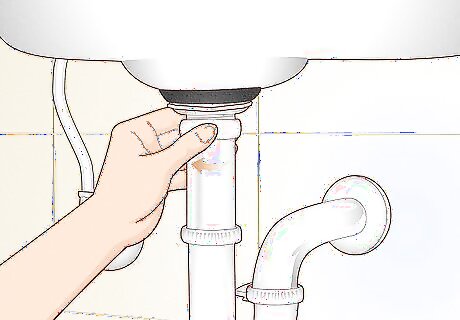
Disconnect the drain pipe from the bottom of the sink strainer. Your sink strainer prevents food from getting into your pipes and it’s where water drains out of your sink. Go underneath your sink and find the round slipnut between the vertical drain pipe to the bottom of the sink strainer. You should be able to easily loosen the slipnut by hand just by turning it counter-clockwise. If you have trouble getting the slipnut loose, then use a pair of pliers to get it moving.
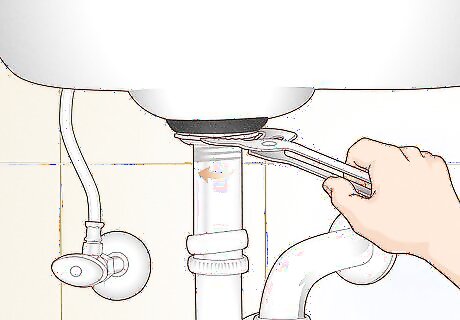
Loosen the strainer’s locknut and remove it from your sink. The locknut is a large hexagonal metal or plastic fastener holding your sink strainer against the bottom of your sink. Grip the locknut with a pair of channel locking pliers so you get the best grip. Turn the locknut clockwise to loosen it. Keep unscrewing the locknut until it drops away from your sink. After that, just grab and pull the strainer straight out from the top of your sink. Some strainers have screws holding them in place. If that’s the case, then use a screwdriver instead.
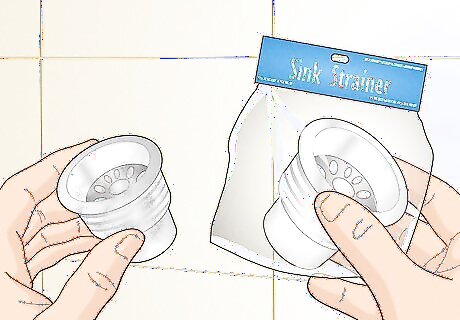
Buy a new sink strainer that matches the size of your old one. There are a few different kinds of sink strainers, so bring the old one with you to the hardware store so you know what to get. Try to get one that’s the same style and size as the old one so you’re less likely to run into any problems. Bell washer sink strainers have a large bell-shaped piece that connects underneath your sink. Locknut strainers have a large threaded nut that holds them in place to prevent leaks.
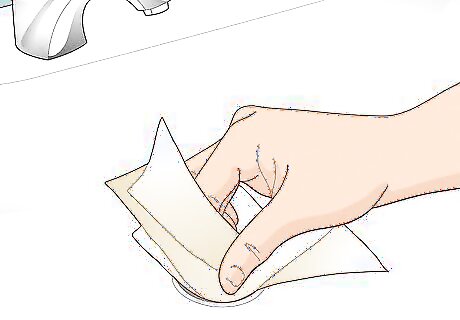
Wipe the drain hole clean with paper towels. There’s probably some leftover putty from the last installation or built-up gunk around the rim of the drain hole. Take a wet paper towel and gently wipe the area around the hole so you have a clean work surface.
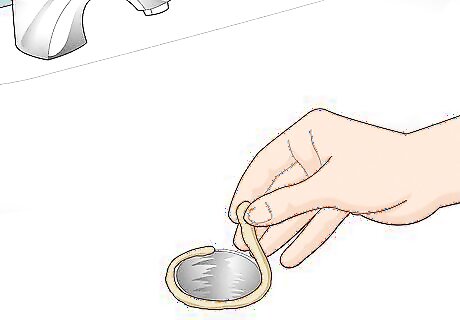
Apply a rope of plumber’s putty around the drain hole. Plumber’s putty is a non-adhesive substance that creates a water-tight seal around drains. Scoop out a handful of plumber's putty and knead it together so it’s easy to work with. Roll the putty between your palms to make a long rope that’s about ⁄2 inch (1.3 cm) thick. Set the plumber’s putty around the rim of the drain hole. You can buy plumber’s putty from your local hardware store.
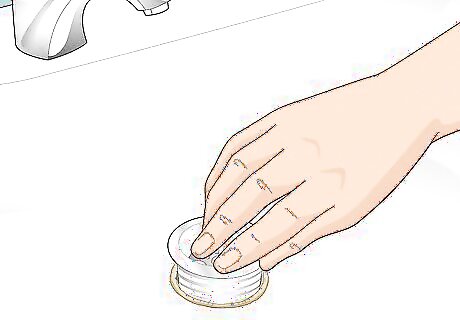
Push the new strainer into the hole in the top of your sink. Separate the top and bottom halves of the strainer if it has multiple pieces. Align the top piece of the strainer with the hole and push it down into the putty firmly. Try to center the drain in the hole so there aren’t any gaps between it and the sink. It’s okay if the extra putty presses out from the sides of the sink strainer. Just wipe it off and throw it away.
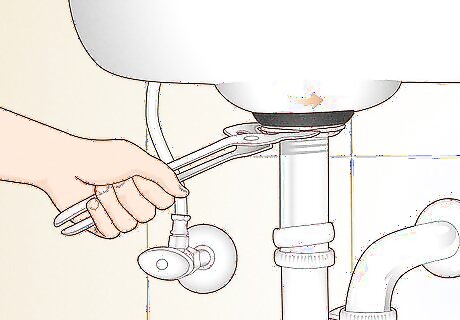
Tighten the locknut onto the bottom of the sink strainer. Stick a pair of needlenose pliers into the strainer’s opening from the top and hold them firmly in place to keep the strainer from moving. Screw the locknut clockwise by hand until it’s tight. Then, use a pair of channel-locking pliers to spin the locknut by another quarter turn. If you don’t hold the sink strainer in place, it will spin in the wet putty and won’t properly seal. Be careful not to overtighten your strainer so you don’t damage it or your sink.
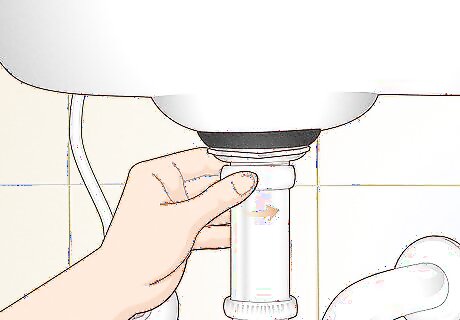
Screw the drain pipe to the bottom of the strainer. Realign the slipnut on the vertical drain pipe with the bottom of the sink strainer. Then, turn it counter-clockwise to tighten it against the drain. Keep turning the nut until it’s hand-tight.
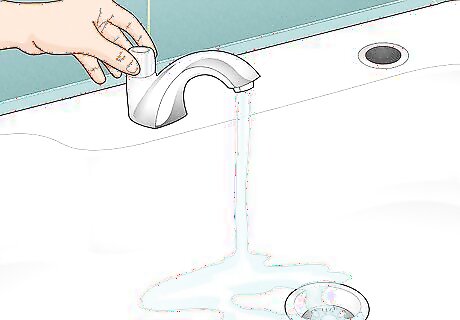
Run some water through the drain to check for leaks. Plug your sink and fill it up with a little bit of water from your faucet. Check underneath your sink to make sure there isn’t any water dripping underneath. Then, unplug your drain and let the water drain out. Watch your pipes to make sure there aren’t any leaks. If you still notice leaks, then call a plumber to look at your sink.




















Comments
0 comment